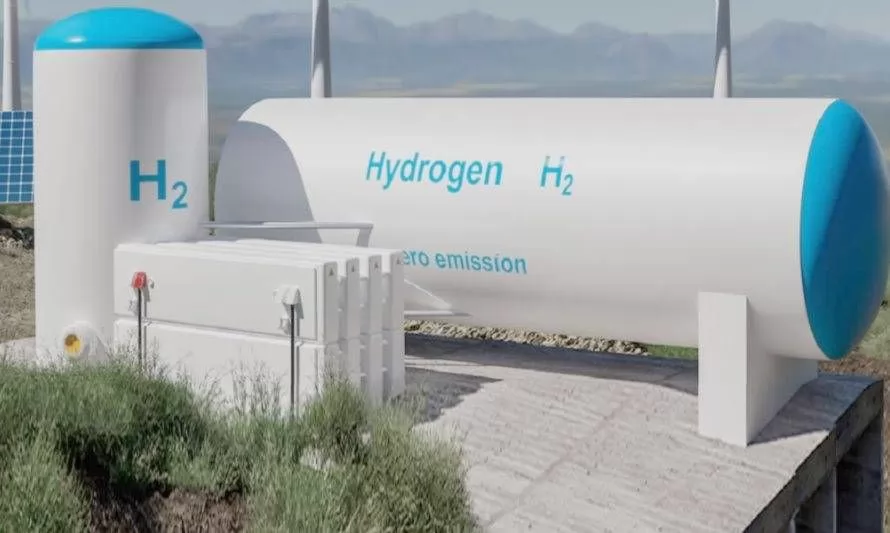Estrategies to minimize invisible costs in hydrogen production

The production of hydrogen has become a fundamental pillar in the search for solutions that facilitate the decarbonization of industrial sectors facing significant challenges. However, certain invisible costs that affect the economic viability of this production are often overlooked. Identifying and addressing these hidden expenses is essential to ensure that hydrogen, especially green hydrogen, is competitive in the market. There are various strategies that can be implemented to minimize these costs and optimize the efficiency of production.
The production of hydrogen has positioned itself as a vital alternative for achieving decarbonization in several industrial sectors. However, there are numerous invisible costs that impact its economic viability, questioning the competitiveness of green hydrogen in the market. This article addresses various strategies to identify and reduce these hidden costs, thus facilitating a more profitable and sustainable hydrogen production.
Identifying invisible costs
The first step in minimizing invisible costs in hydrogen production is to identify them properly. These costs often include expenses such as infrastructure maintenance, energy management, and the selection of inefficient technologies. A thorough analysis of the value chain of hydrogen can help break down each significant component that, while not always directly reflected in the accounts, considerably affects total expenses.
Optimization of productive processes
Optimizing productive processes is key to reducing costs. Implementing advanced technologies that improve production efficiency can mean less waste of energy and materials. For example, using more efficient electrochemicals or improving electrolysis methods to generate hydrogen can significantly reduce long-term costs.
Automation and digitalization
Automation and digitalization of processes allow for greater control and reduction of operational costs. Smart management systems can analyze performance and provide real-time solutions, thus optimizing resource use and reducing hidden costs linked to inefficiency.
Collaboration and technology innovation
Encouraging collaboration among different industry players can lead to innovations that decrease costs. Partnerships with universities and research centers can lead to the development of new techniques that reduce production costs and increase efficiency. Investing in R&D is essential to explore more economical and sustainable alternatives.
Efficient resource management
Implementing efficient resource management is vital. Evaluating the supply chain, from the procurement of raw materials to the delivery of the final product, will identify areas where significant cuts can be made. This includes everything from the selection of suppliers to the efficient transportation of hydrogen.
Grants and green financing
Companies can benefit from grants and financing programs designed to encourage the use of clean technologies. Taking advantage of these opportunities can alleviate the economic burden of hydrogen production, allowing organizations to invest in technological and infrastructure improvements.
Regular review of regulations
The regular review of regulations and standards related to hydrogen production is crucial. Adapting to legislative changes can offer opportunities to reduce costs through tax incentives or sustainability subsidies. Staying informed ensures that companies can act quickly and avoid unnecessary expenses.
Promotion of sustainable practices
Finally, promoting sustainable practices within hydrogen production not only contributes to reducing invisible costs but also enhances the company’s image among consumers and regulators. Implementing sustainability standards can increase competitiveness in the market and open new business opportunities.
The strategies described above are fundamental to addressing invisible costs in hydrogen production, making this energy source more viable and competitive in the transition towards a sustainable and decarbonized future.
The production of hydrogen is consolidating as a critical solution for the transition to a more sustainable economy that is less dependent on fossil fuels. Nevertheless, one of the main obstacles to its economic viability lies in the invisible costs, those that often do not directly reflect in financial analyses but significantly impact the profitability of the process.
To address this challenge, it is essential to implement effective strategies that allow for the identification and reduction of these hidden costs. One of the first actions is to conduct a thorough analysis of the entire production chain, from the procurement of raw materials to the final distribution. This comprehensive approach facilitates the identification of inefficiencies and areas for improvement that may be generating unnecessary additional expenses.
Furthermore, technological innovation plays a crucial role in cost reduction. Companies must invest in research and development to adopt more advanced and efficient methodologies in hydrogen production. Technologies such as electrolysis of water using renewable energies, for example, are not only sustainable but also can contribute to reducing operational costs over the long term.
Another aspect to consider is the training and development of personnel involved in these processes. A well-trained team is not only more efficient but also better prepared to handle unforeseen events and optimize resource use. Promoting a culture of efficiency within organizations is essential for the success of any initiative aimed at reducing costs in hydrogen production.
Finally, establishing strategic alliances with other industry players can open new opportunities for knowledge exchange as well as the development of collaborative projects that allow cost and risk sharing. Cooperation is key to advancing towards a future where green hydrogen is a viable and competitive alternative in the energy market.





